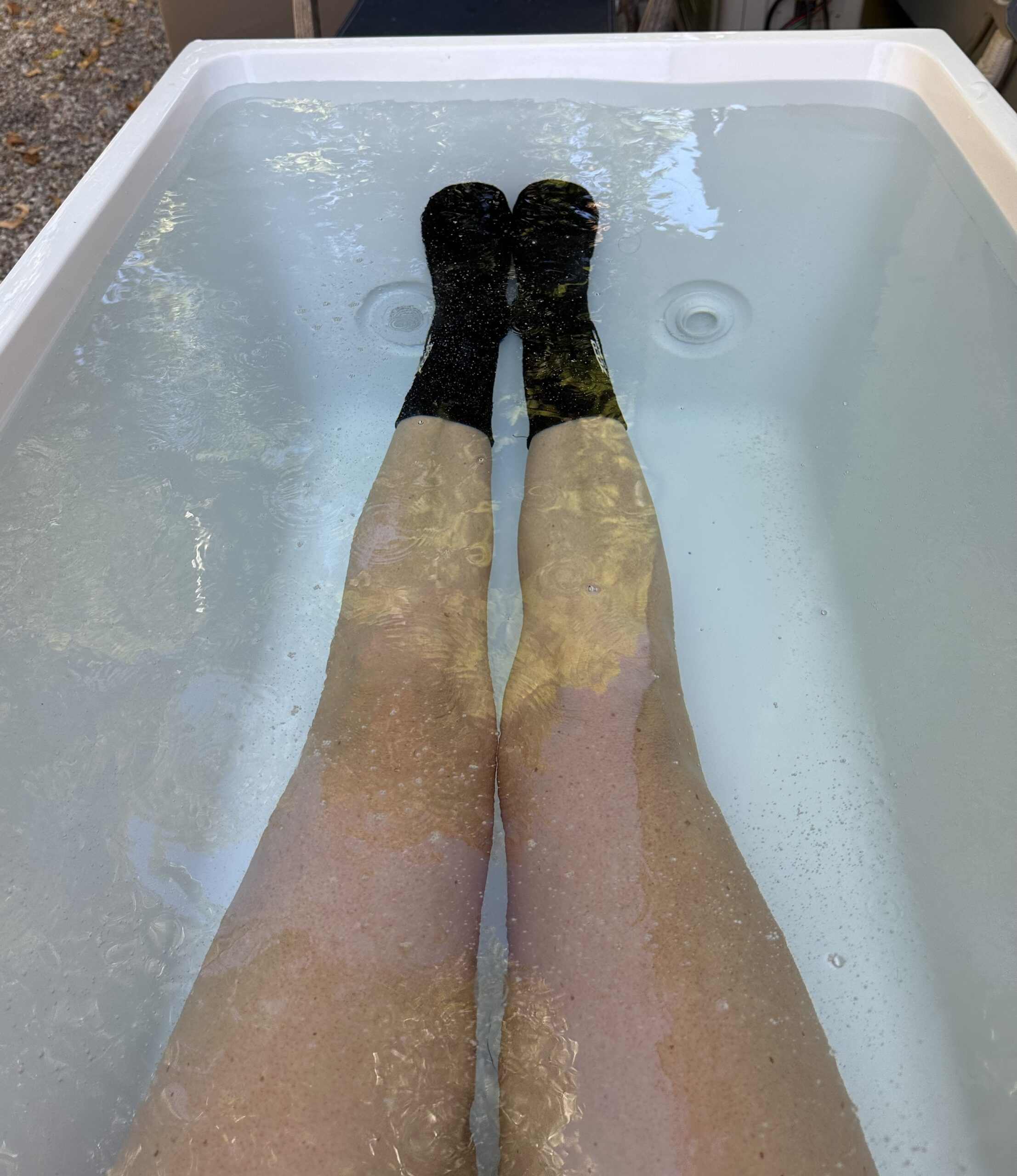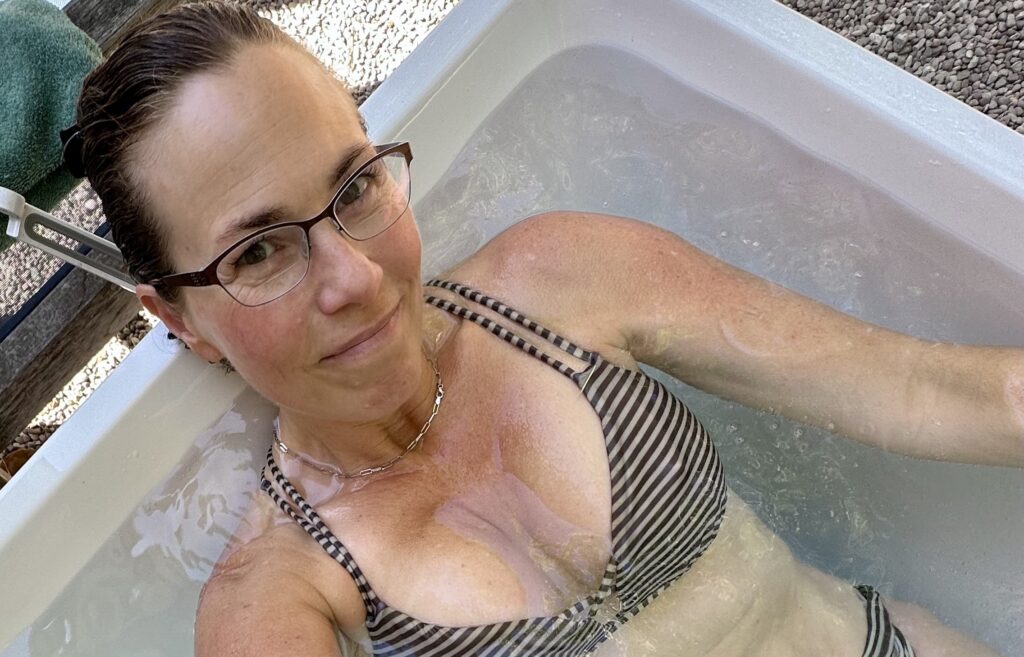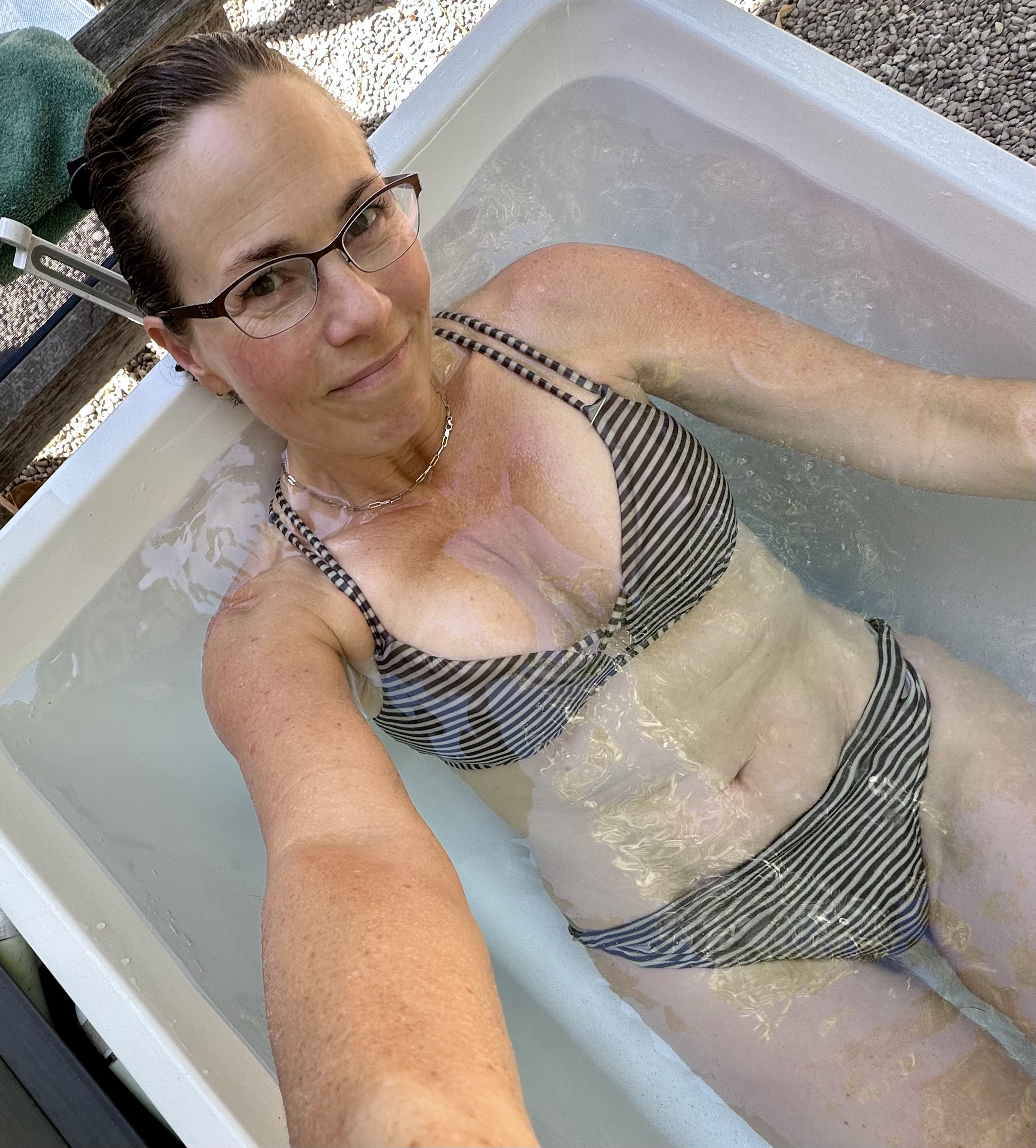You know I love homeopathy most of all. However, it is only one of the ways I get healthy and stay healthy. I do lots of different things for my health, which I think is important in an age where we have exposure to toxins, temptation from food and drink, and an often sedentary life.
In my practice, I encourage and support a self-care mentality, in which each person takes responsibility for all the small ways their health can be maintained, improved, and optimized. My life is better for these small practices, and I think yours will be too. Read here about my previous article on meditation.
Today’s self-care focus is the practice of cold exposure. Yes, that photo is me in my cold plunge!
Andrew Huberman is a neurologist and professor at Stanford. His article on the benefits of cold exposure sums up the benefits as follows:
- Increasing focus and energy
- This occurs with the release of adrenaline and noradrenaline, giving you that feeling of an “edge”.
- Elevating your mood
- This occurs because there is up to a 240% increase in dopamine after a cold exposure, and this dopamine increase can last 4-6 hours, increasing motivation and focus, as well as elevating mood. Here is a clinical trial showing these results.
- Building resilience and grit
- It is really hard to deliberately sit in cold water! Since it is uncomfortable, there can be tremendous resistance to doing it. However, overcoming these obstacles is a meaningful way to challenge yourself and show that you have control over your impulses. This can carry over into other areas of your life.
- Increasing metabolism
- Over time, exposure to cold triggers the conversion of white fat to beige or brown fat, which is more metabolically active than white fat. Read this study published in Cell.
A Medscape article summarized the detailed research on deliberate cold exposure and found the same benefits that Andrew Huberman describes above and additionally found that:
- Cold water exposure is a stress that causes a positive benefit, also known as a hormesis, or a hormetic response.
- Cold exposure can cause significant improvements in cardiovascular health.
- Cold exposure can reduce cholesterol, boost the immune system, help treat autoimmune inflammation, ease pain and speed recovery from sports injuries.
- Cold water immersions greatly increase insulin sensitivity, a benefit because insulin resistance is a huge driver of chronic disease. Read more about insulin resistance in this NY Times article.
The final input I have for you is my own experience. It is joyful! There’s no doubt that it’s hard, and I feel resistance, but I feel great afterward. I feel a big sense of accomplishment for overcoming the resistance. I like to think that if I do something hard first thing, then everything else I do all day will seem easy by comparison.
I keep my cold tub at 54 degrees, and I go in for 3 minutes every other day, often after a sauna. This meets the optimal exposure of 11 minutes per week at 14˚ C or below (57˚). Even at this relatively warm temperature (compared to Wim Hof, for example), the first 30 seconds are hard. However, once I pass the first 30 seconds, it feels amazing and when I get out I am motivated, focused and energetic. I do not even feel cold when I get out. Susanna Soberg advises to end on cold, so I allow my body to warm up naturally rather than taking a warm shower.
exposure of 11 minutes per week at 14˚ C or below (57˚). Even at this relatively warm temperature (compared to Wim Hof, for example), the first 30 seconds are hard. However, once I pass the first 30 seconds, it feels amazing and when I get out I am motivated, focused and energetic. I do not even feel cold when I get out. Susanna Soberg advises to end on cold, so I allow my body to warm up naturally rather than taking a warm shower.
If you want to try it, stay safe. Start out conservatively and slowly lower the temperature. Before I got my plunge, I just left a full bathtub overnight with the window open, and I’d add ice if needed. Pro tip: I find that wetsuit booties really make a big difference!
Want to learn more?
Huberman Lab: The Science & Use of Cold Exposure for Health & Performance
Susanna Soberg: author of Winter Swimming
Rhonda Patrick: founder of Found My Fitness
Wishing you optimal health,
Alexis






